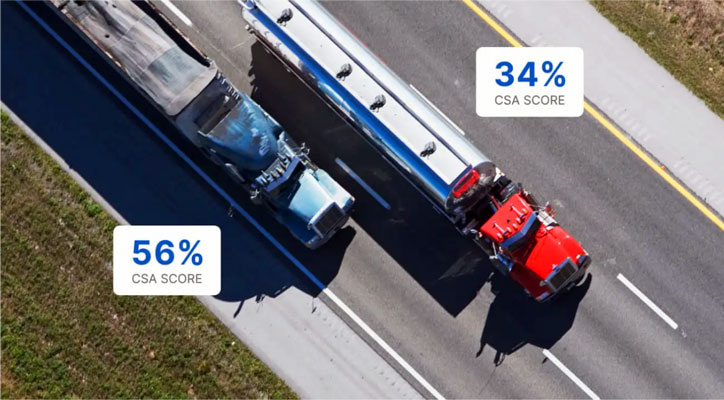CSA scores are a crucial metric for all U.S. truck driving companies. They provide insight into how effectively and safely a company operates. The criteria and scores are calculated by the FMCSA (Federal Motor Carrier Safety Administration). The highest score is between 0 and 100. For customers, a high score means the carrier is reliable to work with; for insurance companies, it indicates that the company adheres to established regulations and is safe.
Achieving high scores is only possible through strict and unquestionable compliance with regulatory requirements. A systematic approach can help a transportation company achieve high rankings in safety and business stability ratings. A reliable CDL staffing agency that offers specialized services, including hiring a truck driver based on necessary criteria, can help with this.
Understanding the CSA Score System (BASICs)
To determine CSA (Compliance, Safety, Accountability) scores, there are seven main evaluation criteria, each analyzing specific aspects of a transportation company’s operations:
1. Hazardous Materials (HazMat) Compliance This category considers violations related to the logistics of hazardous goods. The evaluation analyzes everything from technical documentation and labeling to packaging and handling rules.
2. Unsafe Driving All aspects of on-road behavior are evaluated—driver recklessness, lane departures, speeding, and even documented phone conversations while operating the vehicle. This is why truck driver staffing agencies pay special attention to a candidate’s history and experience.
3. Vehicle Maintenance Reports include all information related to documented vehicle defects, such as issues with lights, braking systems, or tires, found during inspections.
4. Crash Indicator This metric is based on a carrier’s history of involvement in traffic accidents that resulted in injury or death.
5. Hours-of-Service (HOS) Compliance The check focuses on a driver’s failure to adhere to the balance between rest and hours behind the wheel. Professional truck driving employment agencies must pay special attention to this criterion, especially when hiring a truck driver for long-haul routes.
6. Controlled Substances/Alcohol This is a criterion that any employment agency for truck drivers, especially those working with large fleets, must also check at the initial stage. It relates to all violations connected to a candidate’s use of drugs or alcohol.
7. Driver Fitness The evaluation considers the absence of issues with a driver’s qualifications, medical card, or license.
All seven metrics are calculated based on data from FMCSA investigations, crash reports, and roadside inspections. The data period covers the last two years. Transportation companies can monitor their scores monthly through the FMCSA SMS website. This is critically important for quickly addressing any identified issues.
Key Strategies to Improve CSA Scores and FMCSA Ratings
Effective safety management is a system that requires constant attention. It includes refresher courses, continuous training on safe driving practices, and the use of ELDs. Timely vehicle maintenance with a strict schedule and monitoring of compliance is also important. Companies are advised to appoint a person responsible for compliance who will develop procedures for adhering to federal regulations.

For convenience, you can use a monitoring system, fleet management software, and ELDs to accurately track HOS. By actively responding to every violation, truck driving companies can reduce the frequency of non-compliance, thereby improving their rating and CSA scores.
Preventing a Decline in Your FMCSA Rating
You can prevent a decline in your FMCSA rating by monitoring your scores regularly on the official website. It’s important not only to track changes in values, but also to take appropriate measures to correct shortcomings. Proactive steps include self-inspections, data analysis, and ongoing communication with employees. If any violations were recorded by the system in error, it will be much easier to challenge the data soon after it was logged.
Without integrating technology, understanding regulations, and controlling safety at all levels of the company, it is very difficult to avoid fines and costly vehicle downtime. Preventing unpleasant situations and increasing your rating and client trust is possible only through a systematic approach to screening and driver control.








